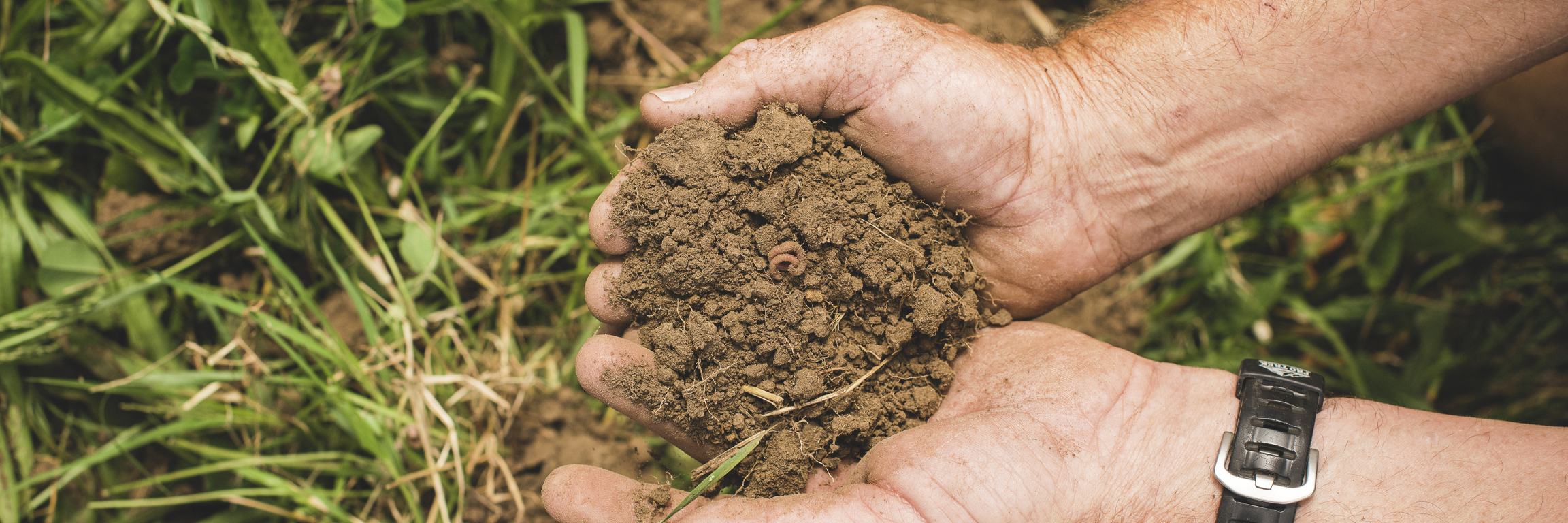Soil supports our region's prosperity
Healthy, well managed soil is vital to the Waikato region’s economy. We have many different soils and it’s important we use them wisely. We describe soils in terms of their characteristics, quality and versatility. Different soils are suitable for different land uses.
Soil forms the foundation for plant life on land. It’s one of four major life supports needed for our agricultural economy:
- sunlight
- air
- water
- soil.
Many of the Waikato’s soils are highly productive. They are a precious resource and need to be managed carefully so they remain productive now and in the future.
More than a load of dirt
Soil is alive and ever-changing. It extends from a few centimetres to several metres below the ground’s surface - varying from place to place.
Soil is made up of:
- broken and weathered rock – containing minerals
- organic matter – decomposed plant and animal remains
- living organisms – for example, insect larvae, worms, and micro-organisms (such as bacteria and fungi)
- spaces filled with water and air.
Different soils have different proportions of these basic components, and can be divided into two main groups:
- Organic soils are made up of mostly organic matter - for example, peat.
- Mineral soils have mostly mineral-based material, for example, from volcanic ash or rocks such as pumice.
Healthy soil is teeming with life. For example, just one teaspoon of soil contains about 100 billion bacteria and about 15 kilometres of fungal threads. These tiny life forms play a vital role in decomposing plant and animal remains. They release valuable nutrients, making them available to plants.
Soil characteristics
There are over 600 different soil types in the Waikato region. Different soils have different properties or characteristics. These characteristics mean that some soils will be more suitable for certain land uses than others. For example, some areas have soils and a climate particularly suited to growing pasture grasses, and others are more suited to growing fruit trees.
If you’ve ever dug a deep hole or trench, you may have noticed the soil changing the deeper you go. The upper part of soil contains most of the organic matter and is called the topsoil. Organic matter plays an important role in the health of topsoil because it:
- contains nutrients that are released when it’s being decomposed
- absorbs and stores moisture
- binds soil particles together.
The soil underneath the topsoil is called the subsoil. The subsoil consists of different layers that extend downwards to the rock or ‘parent material’ below the soil. Subsoil can vary in depth from only a few centimetres to several metres.
We can tell different soils apart by looking at the differences in six key characteristics:
- Chemical characteristics – for example, the amount of nutrients in the soil or how acidic the soil is.
- Colour – often a good indication of drainage. For example, poorly drained soils are usually pale.
- Consistency – how well the soil is held together, for example, sticky, loose, or firm.
- Soil depth.
- Soil structure – the size and shape of soil aggregates, and the space inbetween.
- Texture – how the soil feels between your fingers. Texture differs depending on the proportions of sand, silt and clay in the soil.

